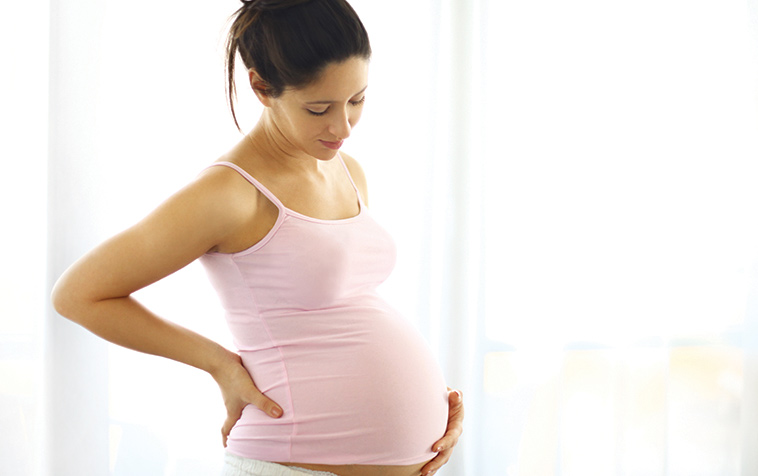
Pregnancy
Most asked questions
It is normal to feel emotional at times in pregnancy and/or have feelings of anticipation in pregnancy as you are coming closer to a new beginning to your life with the arrival of your baby. It is also quite understandable to have some concerns about the baby, giving birth and how you will adapt to life with the new addition to your family.
It’s a good idea for all expectant parents to monitor their mental health and wellbeing and so if you are feeling sad, have lost interest or enjoyment in things that you once enjoyed or find yourself worrying over things to the point that it is causing you to feel distressed, this could be a sign of antenatal depression or anxiety . If you are concerned in any way, seek advice and help from your doctor or midwife.
More questions
The safest option is to avoid alcohol if you're pregnant or planning on getting pregnant. Alcohol has the potential to harm your unborn baby's development and cause lifelong effects. There is no safe time to drink alcohol during pregnancy.
Eating a variety of nutritious food is important whilst pregnant and breastfeeding. Eating the recommended number of daily serves from the five food groups and drinking plenty of water provides your body with what it needs to grow and nourish a baby. One to two servings of fish containing low levels of mercury are recommended per week.
Listeria is bacteria that can be found in some foods and is harmful to pregnant women and their baby. It is advised to avoid these common foods during pregnancy:
- soft and semi-soft cheeses
- cold pressed meats
- cold cooked chicken
- pre-prepared vegetables and salads
- pre-cut fruit
- pậté
- soft-serve ice-cream
- raw seafood
Most experts agree that caffeine should be limited during pregnancy. It’s important to consider all drinks that contain caffeine including coffee, tea and soft drinks and to consume these in moderation. The Australian Department of Health and Ageing suggest limited intake to 300mg of caffeine per day. Alcohol should be avoided during pregnancy as there are no known safe levels.
Folic acid, iodine and Vitamin D may be recommended supplements for expectant women. Other supplements such as iron are not necessary unless your body is low in these. Seek advise from your health care provider prior to taking any supplements or herbal medicines. In the event that your are taking herbal medicines or natural supplements it is important that you inform your healthcare provider so that they can be aware, as not all are recommended during pregnancy.
If you have any questions regarding diet, supplements or listeria in pregnancy - talk to your healthcare provider.
Exercise during pregnancy is known to have many positive effects for both you and your baby. It can prevent you from gaining too much weight, strengthen your heart and lungs and prepare your body for birth. If you are healthy then there should be no reason why you should not exercise. There is no evidence to suggest that regular exercise during a healthy pregnancy is harmful to you or your unborn baby. However, before starting a new exercise regime or activity it’s a good idea to discuss this with your doctor or midwife. Your healthcare professional can advise relevant prenatal classes/exercises.
Aim for 30 minutes of moderate physical activity most days a week. Your heart rate and breathing should be up but you should not feel out of breath. It is particularly important that you do not get too hot during exercise. Also ensure you drink plenty of water. This can be aerobic exercise such as walking or swimming (avoid breaststroke kicks if you have pelvic pain) or strengthening exercise such as yoga, pilates and resistance exercise. When going to classes it’s best to tell the instructor that you are pregnant so that you can have pregnancy options to some exercises. If you’re unsure if you should be doing a certain type of exercise- ask your doctor or midwife.
You may feel more discomfort during exercise in your third trimester due to changes in your body. You should stop exercising straight away if you experience:
- chest pain
- feel faint or dizzy
- notice a decrease in fetal movements
- start to bleed or leak amniotic fluid
- start having contractions
- pelvic, lower back or joint pain
- sudden swelling
Pelvic girdle pain can be described as pain in the pelvis, lower back and surrounding areas, including radiating pain to the upper thighs and perineum. This happens due to the hormones of pregnancy relaxing the ligaments in the pelvis, the increased joint mobility during pregnancy and the weight of the baby growing in the uterus creating extra pressure on the pelvis. It is common, affecting 1 in 5 women. It generally occurs later in pregnancy but can also occur earlier in the pregnancy.
You should tell your doctor or midwife as this can be very painful. Although pelvic pain will not harm baby, your comfort matters and measures should be taken to improve your experience of pregnancy. You may be referred to a physiotherapist or other allied health practitioners who will guide you with how to mobilise (move) without aggravating the pain, as well as give you some specific exercises to improve muscle tone and strength.
To help relieve symptoms stand tall with your bump and bottom tucked in a little, change your position frequently, try to keep your legs together when getting out of the car or when turning over in bed (try sleeping with a pillow between your legs when side lying) in bed. Avoid heavy lifting and going up and down stairs too frequently if you have pelvic dysfunction. Avoid any high impact exercise as this may increase pelvic pain. Other treatment suggestions include warm baths, support garments/belts and heat packs.
Taking regular paracetamol can be helpful in managing the pain short term, but you should still discuss your discomfort with your doctor or midwife.
As your baby and uterus grow some women feel pain in their lower abdominal area, this is known as broad ligament pain. It can occur on one side or both and may feel achy, crampy or like sharp pain. You may notice it when you change positions suddenly, get up from lying down or when you cough, sneeze or laugh. It can last for a second, a minute or a few hours. To reduce the pain try putting your feet up, use heat packs and try to avoid sudden movements. If the pain increases in intensity or does not go away then let your doctor know.
There are routine tests that are offered to all pregnant women to check on you and your baby’s wellbeing. Some tests are offered to all women and some tests may only be required if you are at risk of a certain infection or condition. Depending on the results of these tests, further testing may be required. Once again your doctor or midwife will discuss this with you.
Routine screening tests include-
Blood tests:
- Blood group, rhesus factor and antibody testing
- For anaemia- it is not uncommon for women to develop iron deficiency anaemia during pregnancy
- Screening for previous or current infections &/or immunity to- syphilis, rubella, hepatitis B, hepatitis C and HIV.
Ultrasound scan:
- To assist in determining your babies due date (in the first trimester), position of baby and placenta, baby’s development, confirmation of a singleton/multiple pregnancy, fetal conditions etc.
Urine tests:
- Testing for the presence of blood, proteins, glucose
Genetic testing:
- Information will be given to you about genetic testing - to obtain detailed information about yourself and your baby/babies. You will be presented with options which will include Maternal Serum Screen, NIPS (non invasive pregnancy screen), genetic carrier blood/saliva screening. Your caregiver will support you to make decisions that are right for you.




